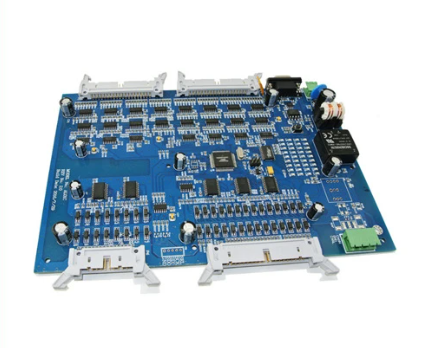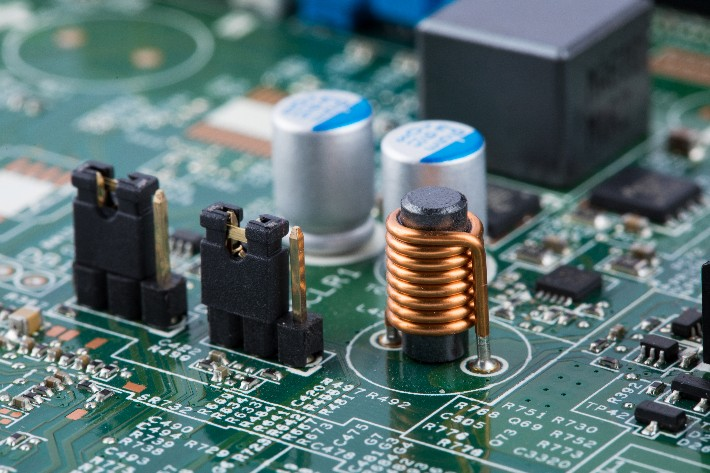Optimizing Double Sided SMT Assembly for Enhanced Efficiency

Key Takeaways
Optimizing double sided SMT assembly is crucial for improving efficiency and maintaining high standards in pcb assembly. One of the foremost aspects to consider is the layout. A well-thought-out layout ensures that both sides of the PCB can be populated without hindering access to either side for inspection or rework. The utilization of specialized equipment such as pick-and-place machines capable of handling complex components can also significantly enhance productivity.
Moreover, implementing a strong quality control approach throughout the assembly process aids in early detection of defects, thus reducing rework and enhancing overall product quality. It’s essential to regularly review and adjust manufacturing processes; this can involve incorporating feedback from production teams to identify bottlenecks and inefficiencies.
"Continuous improvement is key; even small adjustments in production techniques lead to profound impacts on efficiency."
Finally, integration of advanced technologies, such as automated optical inspection systems, can streamline workflow and minimize errors in the pcba process. By prioritizing these strategies, manufacturers can not only reduce production times but also boost customer satisfaction through timely delivery of high-quality products. Embracing these best practices will create a substantial competitive advantage in the dynamic landscape of electronic manufacturing.
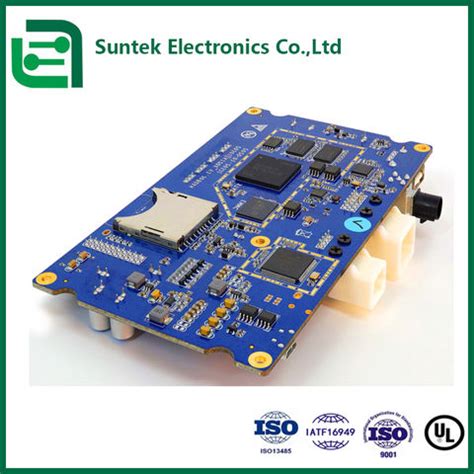
Introduction to Double Sided SMT Assembly
Double sided SMT assembly refers to the process of placing electronic components on both sides of a printed circuit board (PCB), which is typically seen in advanced electronic applications where space is at a premium. This method allows for a denser component layout, optimizing the use of both sides of the pcb and enhancing the overall functionality of the final product. In recent years, the push for compact design has made double sided SMT assembly not just advantageous but essential in achieving high performance in pcb assembly. Manufacturers are increasingly investing in technology and processes that enable efficient placement and soldering of components on both sides, thus accelerating production while maintaining quality. The integration of reliable techniques in double sided pcba not only reduces production times but also minimizes errors during assembly, leading to improved consistency and a higher yield rate. Understanding this intricate process is vital for those engaged in electronic manufacturing, as it lays a foundation for implementing further innovations and refining existing methodologies within the industry.
Key Challenges in Double Sided SMT Assembly
Double sided SMT assembly presents several challenges that can significantly impact the efficiency and quality of pcb assembly processes. One of the primary issues is the alignment and registration of components on both sides of the board. Misalignment can lead to defects that compromise the performance and reliability of the finished product. Additionally, achieving optimal thermal management during soldering is crucial, as inadequate heat distribution can result in improper solder joints, particularly for components on opposite sides.
Another challenge includes managing the delicate balance between component density and placement accuracy. High-density pcba often necessitates smaller components that require precise handling and placement to avoid damage or incorrect soldering. Furthermore, the presence of components on both sides complicates reflow soldering processes, as adjustments must be made to ensure complete solder melting without affecting previously placed parts.
Moreover, ensuring adequate cleaning processes between assembly stages is critical to prevent residue that could impact adhesion or lead to circuit failure. The inherent complexity of managing these issues often results in increased production times and potential quality control problems if not addressed effectively.
In conclusion, tackling these challenges involves comprehensive planning and implementation of robust processes to streamline operations while maintaining quality standards in double sided SMT assembly. Understanding these obstacles is vital for developing effective strategies that enhance overall productivity in electronic manufacturing.
| Challenge | Impact on Production | Solution |
|---|---|---|
| Misalignment | Increased defects | Improved alignment technology |
| Inadequate thermal management | Poor solder joints | Enhanced heating profiles |
| Component density management | Risk of damage | Precision placement systems |
| Cleaning process after assembly | Residue affecting quality | Streamlined cleaning protocols |
By recognizing these issues and taking proactive measures, manufacturers can significantly enhance their capabilities in double sided SMT assembly, leading to improved efficiency and product quality.
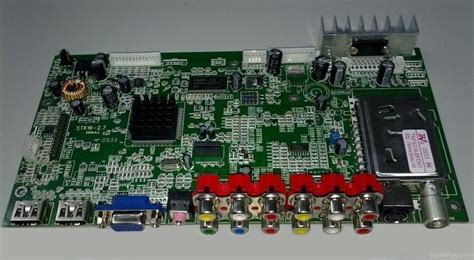
Techniques for Enhancing Efficiency
In the realm of double sided SMT assembly, efficiency is paramount to achieving higher productivity and lower costs. One effective technique is to implement automated handling systems that streamline the transportation of PCBA (printed circuit board assembly) components throughout the manufacturing line. These systems not only reduce manual labor but also minimize the risks of errors associated with human handling. Additionally, utilizing advanced pick-and-place machines can significantly increase the speed and accuracy of component placement on both sides of the PCB. This is crucial, as densely populated boards often present complex challenges in terms of aligning and soldering components correctly.
Another technique involves optimizing the design layout of the printed circuit boards. By strategically placing components to improve access for soldering and inspection processes, manufacturers can reduce cycle times effectively. Employing design for manufacturability (DFM) principles in the early-stage PCB design enables engineers to foresee potential assembly issues and address them proactively.
Routine training sessions for operators on best practices can also lead to a measurable enhancement in efficiency. Keeping personnel well-versed in latest technologies and tools ensures that they can adapt quickly to new processes. Lastly, integrating real-time monitoring systems allows manufacturers to track key performance indicators (KPIs) closely, enabling timely adjustments that contribute to continuous improvement in overall quality and efficiency of double sided SMT assembly operations.
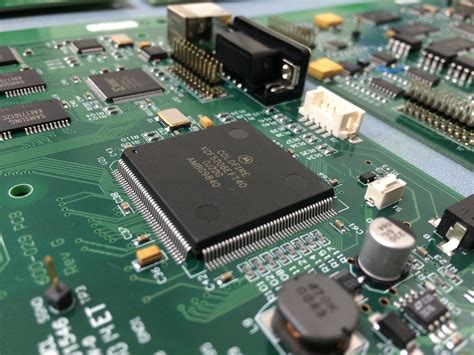
Best Practices for Quality Control
Effective quality control is essential in double sided SMT (Surface Mount Technology) assembly to ensure that the pcb assembly process meets the highest standards of performance and reliability. The implementation of rigorous inspection protocols at multiple stages of production helps identify defects early, thus minimizing costly rework. One widely adopted method is the use of Automated Optical Inspection (AOI), which utilizes high-resolution cameras to detect misalignments, solder issues, or missing components in both sides of the pcba. Additionally, incorporating statistical process control (SPC) techniques can help monitor key parameters and establish control limits, ensuring that each stage remains within predefined tolerances. Another best practice involves training operators thoroughly on both manual and automated processes, as well-educated personnel are crucial to maintaining quality and executing repairs efficiently when discrepancies occur. Implementing a feedback loop that integrates insights from the quality control phase back into the production process fosters a continuous improvement culture. This not only enhances quality assurance but also contributes to overall operational efficiency in double sided SMT assembly.

Strategies for Reducing Production Times
To achieve significant reductions in production times during double sided SMT assembly, it’s essential to implement a multi-faceted approach. First and foremost, optimizing the layout of the pcb assembly line can greatly enhance workflow efficiency. By strategically positioning machinery and workstations, manufacturers can minimize movement and streamline processes. Additionally, utilizing advanced pcba techniques, such as automated pick-and-place equipment, allows for faster component placement with high precision.
Another critical factor is careful planning of the assembly sequence. Prioritizing components that require fewer rework processes—or that have shorter lead times—can lead to quicker overall production cycles. Furthermore, regular training programs for operators can ensure they are familiar with the latest techniques and tools in double sided SMT assembly, thereby reducing errors and downtime.
Finally, integrating real-time monitoring systems can provide valuable insights into production speed and efficiency, allowing for immediate adjustments as needed. By leveraging these strategies, companies can significantly reduce their production times while maintaining high-quality standards in their pcb assembly processes.
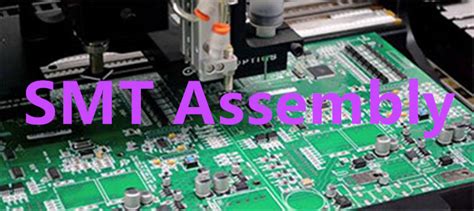
Innovative Technologies in SMT Assembly
In the fast-evolving world of pcb assembly, the implementation of innovative technologies has become pivotal for enhancing the performance of double-sided Surface Mount Technology (SMT) assembly. With the integration of automation and advanced software tools, manufacturers are now able to streamline processes, ensuring pcba efficiency and precision. For instance, the use of laser alignment systems improves the accuracy of component placements on both sides of the board, significantly minimizing errors that could lead to costly rework. Moreover, machine learning algorithms are now deployed to analyze production data in real-time, enabling predictive maintenance and reducing downtime. By adopting 3D inspection systems, companies can achieve unparalleled quality control, detecting defects that traditional methods might overlook. These technological advancements not only facilitate faster production cycles but also bolster the integrity of electronic products, thereby enhancing customer satisfaction and trust in pcba quality. In conclusion, embracing these innovative solutions is not merely a competitive advantage but a necessity for any organization looking to thrive in the modern electronics manufacturing landscape.
Case Studies: Successful Implementation of Optimized Processes
In the realm of pcb assembly, various companies have successfully adopted optimized strategies that significantly enhance efficiency and quality. For instance, one leading electronic manufacturer integrated a dual-lane pcba line, which allowed for simultaneous top and bottom SMT assembly processes. This innovative shift not only reduced cycle times but also increased the throughput by an impressive margin. Their approach encompassed agile line balancing techniques, where operators were cross-trained to handle multiple stations, thereby ensuring that production flow remained uninterrupted even during peak demand periods. Furthermore, the incorporation of real-time monitoring tools provided these manufacturers with vital data about their double sided SMT assembly operations, enabling proactive adjustments and minimizing disruptions. Another case highlighted the adoption of advanced inspection systems that utilized machine vision technology to inspect solder joints on both sides of the board simultaneously. This method dramatically reduced defects and improved overall product quality in their pcba outputs. Collectively, these case studies demonstrate how embracing modern techniques and innovative technologies can facilitate a smoother SMT assembly process while achieving higher standards in electronics manufacturing.
Future Trends in Double Sided SMT Assembly
As the landscape of pcb assembly continues to evolve, several future trends are emerging that aim to reshape the double sided SMT assembly process. One significant trend is the integration of advanced automation technologies, which can streamline operations and minimize human error. This shift towards greater automation will also facilitate faster changeovers, enabling manufacturers to respond more swiftly to market demands. Additionally, the adoption of real-time data analytics is becoming increasingly prevalent; companies are harnessing the power of big data to monitor production metrics and improve decision-making processes. This data-driven approach not only enhances efficiency but also contributes to more precise quality control in pcba processes. Another noteworthy trend is the focus on sustainability within electronic manufacturing; as companies strive to reduce their environmental footprint, eco-friendly materials and energy-efficient practices are gaining traction in SMT assembly lines. Ultimately, these emerging trends are poised to redefine how double sided SMT assembly is executed, emphasizing not only efficiency but also adaptability and sustainability in a competitive marketplace.
Conclusion
In summary, optimizing double sided SMT assembly is crucial for achieving greater efficiency within modern electronic manufacturing processes. As the demand for faster and more reliable pcb assembly grows, manufacturers must focus on several key strategies to enhance their operations. Implementing rigorous quality control measures is essential; this includes frequent inspections throughout the pcba process to ensure the integrity of components on both sides of the board. Additionally, employing innovative technologies such as automated inspection systems can significantly reduce errors and downtime. By embracing best practices aimed at optimizing workflow and minimizing material waste, manufacturers can maintain high standards of quality while also accelerating production times. As industry trends evolve and new techniques emerge, continuous adaptation will be vital for sustaining competitive advantage in the fast-paced electronics market. Collectively, these strategies not only improve output but also bolster customer satisfaction by delivering high-quality products more efficiently.
FAQs
What is double sided SMT assembly?
Double sided SMT assembly refers to the process of placing surface mount components on both sides of a printed circuit board (PCB). This technique is particularly useful in applications where space is at a premium and helps maximize the functionality of a PCB without increasing its size.
Why is double sided SMT assembly challenging?
The challenges associated with double sided SMT assembly include maintaining alignment during mounting, managing thermal profiles during reflow soldering, and ensuring that components on one side do not interfere with those on the other side. These complexities make it crucial to implement rigorous quality control measures.
How can I enhance efficiency in double sided SMT assembly?
Enhancing efficiency can be achieved through various techniques such as optimizing the placement sequence of components, utilizing advanced pcba software for accurate programming, and employing automated inspection systems to quickly identify defects.
What best practices should I follow for quality control?
Best practices for quality control in pcb assembly include implementing IPC-A-610 standards, performing regular machine calibrations, and using automated optical inspection (AOI) to detect soldering defects or misaligned components early in the process.
What strategies can help reduce production times?
To reduce production times for double sided SMT assembly, consider strategies such as simplifying design layouts for ease of assembly, employing quick changeover practices for reflow ovens, and optimizing your supply chain management to ensure timely component availability.
For more information about optimizing your pcb assembly, please click here: Andwin PCB Assembly




